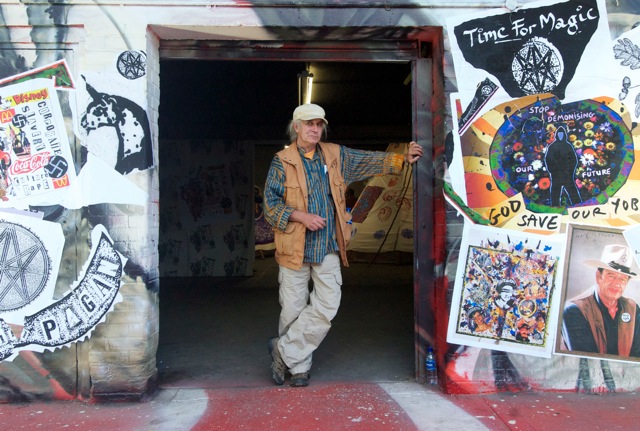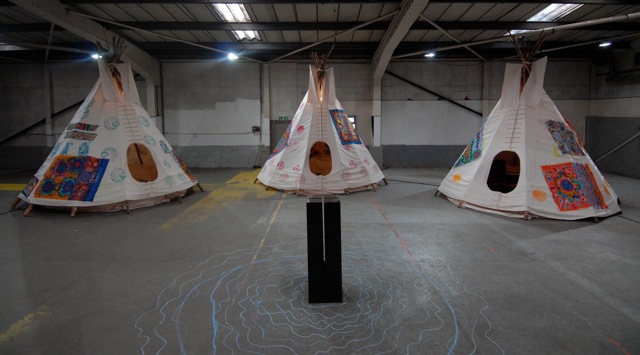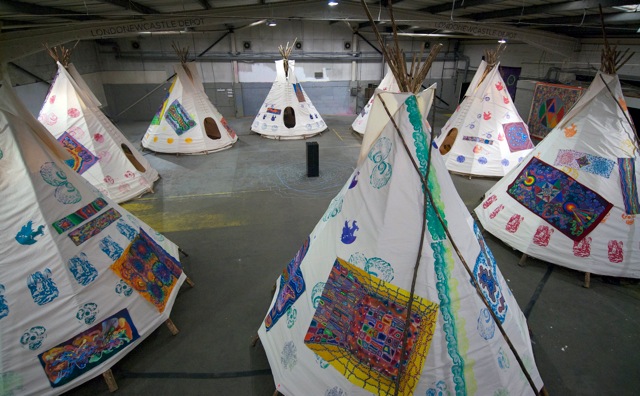What could sum up the spirit of punk better than the Sex Pistols? Johnny Rotten, guitarist Steve Jones, drummer Paul Cook and bassist Glen Matlock, along with Sid Vicious swaggered their way through the troubled 70s, spitting and kicking at the social conformity and conservative mindsets. Of course, they left musical anthems that will forever appeal to everyone’s inner rebel but, above and beyond the music, the spirit of the infamous band survived past their short reign of anarchy through the visuals created for them by artist Jamie Reid.

You know the ones: the defaced image of the Queen, the modified Union Jack, the ransom note aesthetic created with the torn, pinned together, collaged and copied images that cyclically resurface in art, in fashion and in popular culture. The Croydon educated Reid masterminded the hand-crafted anti-aesthetic that has come to influence subsequent generations and he is still producing work in a similar spirit of anarchy and direct action.
Perhaps it’s the prevalent economic misery and the conservative government in power squeezing every drop of life out of social programmes but there was never a more appropriate time to revisit the DIY ethic of punk subculture. That is perhaps why Isis Gallery is currently showing the first full-scale installation by Jamie Reid to be seen in London in decades. Hidden off the beaten path in the bare-bones industrial space of the Londonewcastle depot in Wenlock Road, The Ragged Kingdom is a rare occurrence in the contemporary visual arts landscape: a space for people to play.
It essentially is a makeshift indoor village made of a circle of 8 tepees decorated with colourful paintings and stencils. Each contains a different environment saturated in Reid’s own aesthetic: a projection room, a printing room, a smoking room, even a bedroom. The many stabs at corporate culture and capitalism are sharing the stage with references to pre-colonial cultures and more abstract, colourful elements. It’s beautiful to look at but the fun really starts when you realise that this does not have to be approached in the same way you would approach a Turner landscape at the National Gallery.
You can enter each tent and spend quite a bit of time looking at the projections, vintage machinery, furniture, works of art and printed matter that they contain. Nobody will follow you around and tell you not to touch things. There is no “audience” here, only participants. You are basically invited to appropriate this space, to make it your own with whoever else happen to be there.
Perhaps people are too well trained to engage with art in a distant, strictly specular manner because, at the moment, what is missing in The Ragged Kingdom is a community to take it over as a means of expression, a group of people to use it as an actual starting point for creative thinking and doing. The Ragged Kingdom is be the perfect place to meet and think about how to tear it up and start all over again. Go on, take it over while it’s there (until the 30th of July).















